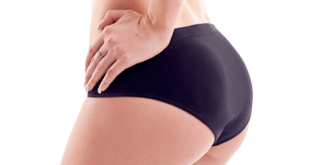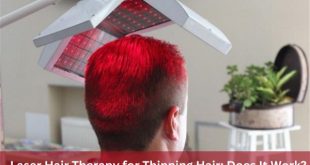Hair is often seen as a woman’s crowning glory. It reflects personality, style, and even confidence. However, for many women, hair loss can be an unsettling experience that affects not just appearance but self-esteem too. Struggling with thinning locks or bald patches doesn’t have to be the end of your hair journey. With advancements in female hair restoration, there are now numerous ways to achieve that fuller look while maintaining a natural appearance.
Whether you’re itching for a change or seeking solutions to restore what you’ve lost, understanding your options can empower you on this path. Let’s explore the causes of female hair loss and delve into innovative restoration methods designed specifically for women like you—so you can embrace those beautiful tresses once again!
Understanding Female Hair Loss
Female hair loss is more common than many realize. It can strike at any age, leaving women feeling vulnerable and concerned about their appearance. Unlike men, women often experience gradual thinning rather than distinct bald spots.
Understanding the mechanics of hair growth is essential. Each strand goes through a cycle of growth, rest, and shedding. When this balance is disrupted, it leads to noticeable hair loss over time.
Factors such as hormonal changes during pregnancy or menopause can significantly impact hair health. Additionally, stress—both physical and emotional—can contribute to temporary or even long-term thinning.
Genetics also play a role; if female relatives experienced similar issues, you might too. Environmental factors like diet and lifestyle choices are crucial in maintaining healthy locks as well.
Recognizing these elements can pave the way for informed decisions regarding effective restoration options tailored specifically for you.
The Different Causes of Female Hair Loss
Female hair loss can stem from a variety of factors. Hormonal changes often play a significant role. Conditions like pregnancy, menopause, and thyroid disorders can disrupt the delicate balance of hormones, leading to shedding.
Genetics is another common culprit. Female pattern baldness runs in families and can lead to thinning hair over time.
Stress also takes its toll on hair health. Physical or emotional stressors may push hairs into a resting phase, causing noticeable fallout later on.
Nutritional deficiencies cannot be overlooked either. Lack of essential vitamins and minerals—such as iron or biotin—can weaken strands and stunt growth.
Certain medical conditions contribute as well. Autoimmune diseases like alopecia areata cause the immune system to attack hair follicles, resulting in sudden bald patches.
Harsh styling practices and chemicals in products may damage hair over time, exacerbating loss.
The Impact of Hair Loss on Women
Hair loss can be a deeply personal experience for many women. It often affects self-esteem and confidence in profound ways. When hair starts thinning or receding, it may feel like a part of one’s identity is fading away.
Social perceptions play a significant role here. Long, luscious locks are often associated with femininity and beauty. Losing that can lead to feelings of inadequacy and embarrassment.
Many women find themselves avoiding social situations or feeling anxious about how others perceive them. This emotional toll can impact relationships, both personal and professional.
Beyond the physical changes, there’s an emotional journey that comes with hair loss—one filled with uncertainty and vulnerability. Seeking support from friends, family, or even professionals becomes crucial during this time to navigate these complex feelings effectively.
Female Hair Restoration Options
When it comes to female hair restoration options, there’s a variety to choose from. Each method caters to different needs and preferences.
Topical treatments are often the first line of defense. Products containing minoxidil can stimulate growth, making them popular among women experiencing thinning hair.
For those seeking more immediate results, non-surgical methods like laser therapy have gained traction. This technique promotes circulation in the scalp and encourages healthier follicles without invasive procedures.
Surgical options present another avenue for restoring volume. Hair transplant surgeries involve relocating hair follicles from denser areas to thinning spots on the scalp. This approach often yields natural-looking results but requires careful consideration and planning.
Your choice will depend on your specific situation, lifestyle, and budget. Consulting with professionals can help clarify which route aligns best with your goals for fuller hair.
Non-Surgical Methods for Restoring Hair
Non-surgical methods for restoring hair offer women a range of options that are less invasive. These approaches cater to different needs and preferences, making them accessible to many.
Topical treatments, such as minoxidil, stimulate hair growth and can be easily applied at home. They require consistent use but yield positive results over time.
Another popular choice is low-level laser therapy (LLLT). This technology uses light energy to encourage blood flow in the scalp, promoting healthier follicles. Many find this method relaxing and non-disruptive.
Platelet-rich plasma (PRP) therapy has gained attention too. By utilizing your body’s own platelets injected into the scalp, you can boost natural hair regeneration without surgery.
Hairpieces or extensions also provide an immediate solution for those seeking fullness without permanent changes. These options allow for versatility in style while enhancing volume effortlessly.
Surgical Methods for Restoring Hair
Surgical methods for restoring hair offer a more permanent solution for those struggling with significant hair loss. These techniques are designed to transfer healthy hair follicles from one area of the scalp to another.
Follicular Unit Transplantation (FUT) is a popular choice. This method involves removing a strip of skin containing hair follicles and implanting them in thinning areas. The result can be natural-looking and long-lasting.
Another option is Follicular Unit Extraction (FUE). This technique extracts individual follicles directly from the donor site, minimizing scarring and recovery time. Many women prefer FUE due to its less invasive nature.
Both methods require careful consideration and consultation with an experienced specialist. Each individual’s needs vary, making it essential to assess your situation before deciding on surgery as a viable treatment route.
Finding the Right Treatment Option for You
Finding the right treatment for hair restoration is a deeply personal journey. Every woman’s experience with hair loss is unique, shaped by various factors such as genetics and lifestyle.
Start by consulting a qualified professional. A specialist can provide insights tailored to your specific condition. They will evaluate your scalp health, hair density, and overall well-being.
Consider both non-surgical and surgical options. Non-invasive treatments like PRP therapy or laser therapy may be ideal if you prefer less downtime. On the other hand, surgical methods like follicular unit transplantation offer long-lasting results but require more commitment.
Don’t rush the decision-making process. Take time to weigh each option carefully against your needs and expectations. Research different clinics, read reviews, or even seek testimonials from others who have undergone similar procedures.
Choose what resonates best with you; it’s about restoring not just your hair but also your confidence.
Maintaining Healthy Hair After Restoration
After undergoing female hair restoration, maintaining healthy hair is crucial for achieving lasting results. Start by establishing a gentle hair care routine. Use sulfate-free shampoos and nourishing conditioners that hydrate without weighing your strands down.
Consider incorporating regular scalp massages into your regimen. This practice enhances blood circulation and promotes follicle health. Additionally, using essential oils like rosemary or peppermint can stimulate growth naturally.
Nutrition plays an essential role too. A balanced diet rich in vitamins and minerals supports hair vitality. Foods high in omega-3 fatty acids, iron, and biotin are particularly beneficial.
Limit heat styling tools to prevent damage to newly restored hair. If you must use them, always apply a protective spray beforehand.
Stay hydrated! Drinking plenty of water keeps your body—and your hair—well-nourished from the inside out. Take these steps to ensure your beautiful new locks thrive for years to come.
Conclusion
The journey to restoring your hair can be transformative. Embracing the right solutions for female hair restoration allows you to regain confidence in your appearance and feel empowered. Whether you choose non-surgical methods or opt for surgical treatments, it’s essential to find what works best for you.
Remember that maintaining healthy hair post-restoration is just as important as the initial treatment process. Regular care and attention will help keep your locks looking vibrant and full.
If you’re struggling with hair loss, consider reaching out to professionals who specialize in female hair restoration at Boston Hair Clinic. They can guide you through personalized options tailored to your needs, helping you achieve a fuller look while ensuring natural results.
Your path towards thicker, healthier-looking hair awaits—take the first step today!







